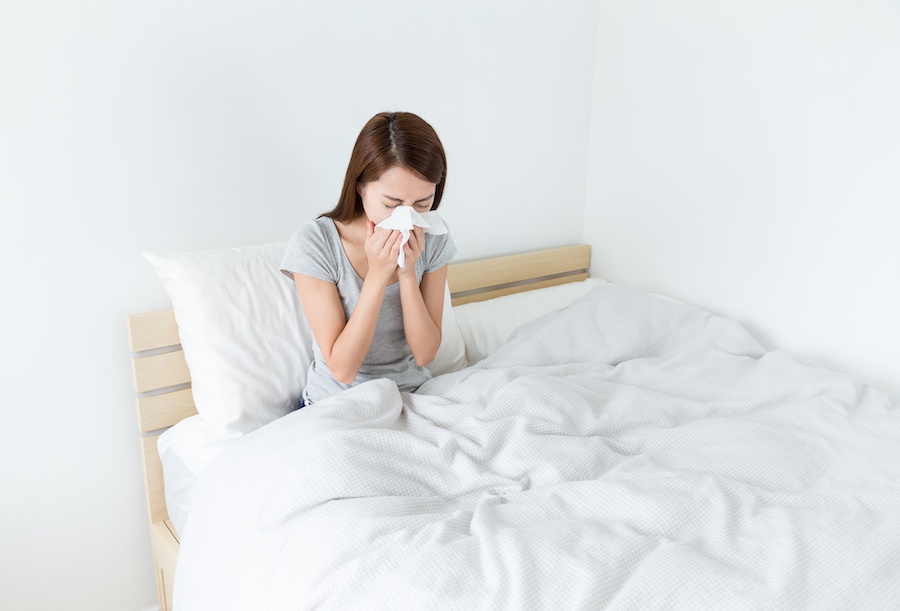Do you suffer from daily sneezing, watery eyes, clogged sinuses, or sniffling? Have your allergies become a simple fact of life for you? While millions of Americans will answer "yes," what they might not know is that one of the biggest causes behind their allergies might be their own mattress.
Related Blog: How Quality Sleep Can Help Ward Off The Cold or Flu
Allergies and Mattresses
According to the Asthma and Allergy Foundation of America, approximately 20 million Americans suffer from a dust mite allergy. This makes it one of the most common triggers of year-round asthma and allergies.
Unfortunately, bedrooms are often primary allergy triggers, with mattresses being the main culprit. These microscopic creatures feast on dead human skin cells embedded in your bedding materials.
Thankfully, there are some key things you can do to prevent these nasty creatures from negatively impacting you. These steps will ultimately work to alleviate your allergy symptoms so that you don't have to wake up with itchy eyes or a running nose.
3 Steps to Reducing Your Mattress-Related Allergies
While you should always consult your doctor about full treatment options for your allergies, there are a few things you can do on your own to relieve your allergy symptoms—particularly at home.
1. Replace Your Bedding in a Timely Manner
While there are always exceptions and caveats regarding timing, here are some general rules of thumb:
- Sheets and bedding should be changed and washed regularly
- Pillows should be replaced every other year
- Mattresses should be replaced every eight years
If you're unsure how old your mattress is, you should be able to check the tag for the sale date. Anything more than eight years old, and you're likely sleeping on piles of impacted dust, sweat, and dead skin, a size of which won't be capable of being readily removed.
2. Pick the Appropriate Mattress Material
Allergy and asthma sufferers should look for a synthetic material like memory foam that has been proven to be easier to clean and collects overall significantly less dust than traditional materials. Moving forward, consider choosing an 'allergy-proof' slipcover that goes over your mattress and prevents dust mites from traveling from your sheets to your mattress.
3. Practice Good Hygiene and Home Care
As we indicated above, sheets and pillowcases should be frequently washed (at least once a week) in hot water to remove dust and feeding dust mites. While most people have this step in place, many are unaware that in addition to vacuuming their floors regularly, they should also vacuum their mattresses!
This is a simple but important step to keeping down mites. Every time you strip your bed to wash your sheets, give your mattress a thorough vacuuming.
If it's time for a new mattress, Land Of Sleep is here to help! We carry a large selection of mattresses and offer free, same-day delivery and removal of your old mattress. Download our guide to better sleep today!




